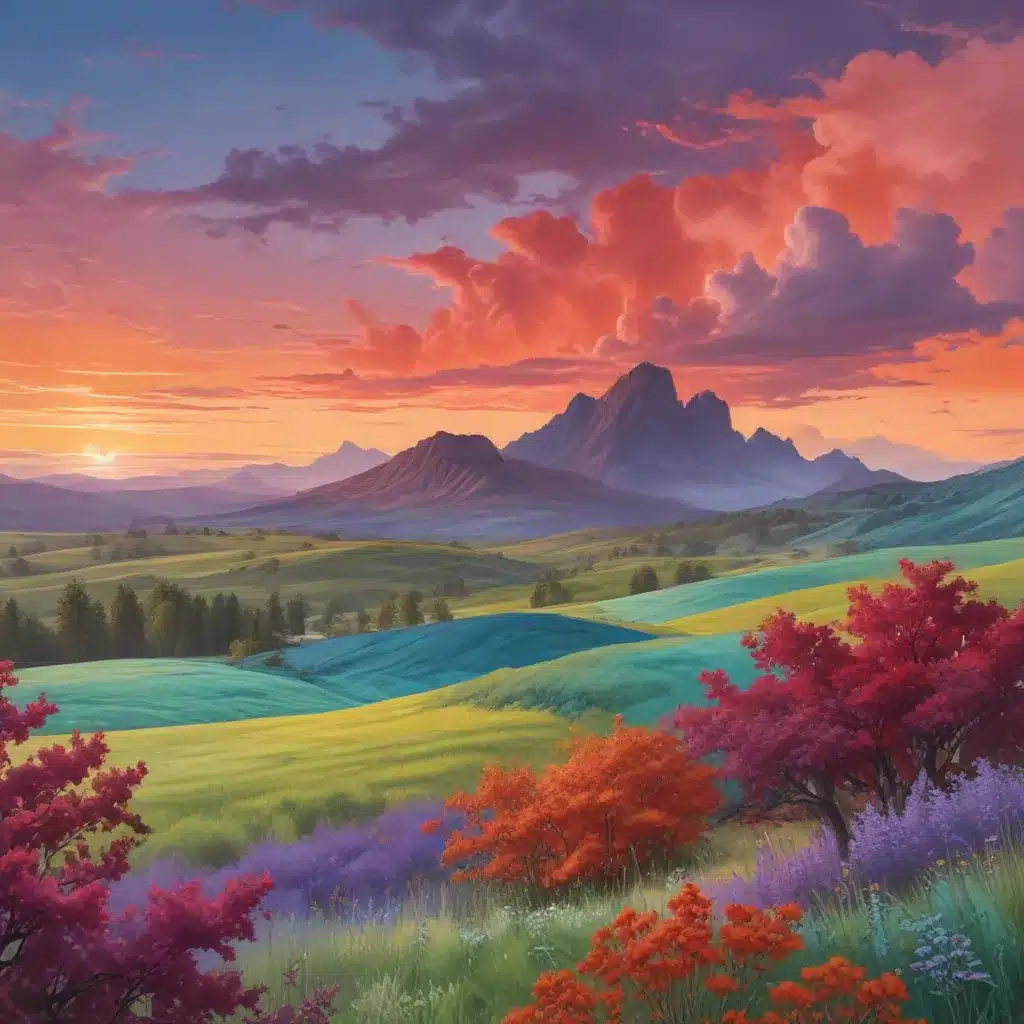
The art of landscape design extends far beyond the mere arrangement of flora and hardscaping elements. At its core lies the strategic application of color theory – the study of how colors interact, influence human perception, and evoke emotional responses. By harnessing the principles of color theory, landscape designers can craft visually captivating outdoor environments that captivate the senses and forge deeper connections with their audience.
Color Theory Fundamentals
At the heart of color theory lies the color wheel – a circular arrangement of hues that illustrates the relationships between primary, secondary, and tertiary colors. These foundational color relationships serve as the building blocks for harmonious palettes and strategic contrasts.
Primary colors – red, blue, and yellow – are the foundational hues from which all other colors are derived. Secondary colors – orange, green, and purple – are created by mixing two primary colors. Tertiary colors are the result of blending a primary and a secondary color, yielding nuanced shades like blue-green, yellow-orange, and red-violet.
The strategic use of complementary colors – those positioned directly across from one another on the color wheel, such as red and green or blue and orange – can create striking visual contrasts that command attention. Conversely, analogous colors – those situated adjacent on the wheel, like blue, blue-green, and green – foster a sense of harmony and cohesion.
Psychological Impact of Color in Landscape Design
Beyond the technical aspects of color theory, the psychological and emotional associations of hues play a crucial role in landscape design. Colors have the power to evoke specific moods, convey brand identities, and influence human behavior.
Warm colors, such as red, orange, and yellow, are often associated with energy, excitement, and vibrancy. These hues can create a sense of warmth and invigoration, making them well-suited for areas intended for social interaction or active recreation.
In contrast, cool colors – including blue, green, and purple – are typically linked to calmness, tranquility, and introspection. Incorporating these soothing tones can foster a sense of serenity and relaxation, creating spaces for contemplation and respite.
The cultural significance of colors also holds sway in landscape design. For instance, the color green is often associated with growth, renewal, and environmental stewardship – a fitting choice for landscapes that prioritize sustainability and ecological harmony.
Crafting Visually Striking Landscapes
Leveraging the principles of color theory, landscape designers can curate harmonious color palettes that elevate the visual appeal and emotional impact of their creations. By strategically combining complementary, analogous, and contrasting hues, they can guide the viewer’s gaze, establish focal points, and create a cohesive visual narrative.
Vegetation Selection
The selection of plants and their associated foliage colors is a crucial aspect of landscape design. Choosing a diverse array of native and adapted species that offer a range of hues, from vibrant blooms to lush greenery, can contribute to a visually captivating and ecologically balanced landscape.
Terrain and Hardscaping
The integration of terrain features and hardscaping elements, such as stone, brick, and concrete, further enhances the visual impact of a landscape. Designers can leverage the inherent colors and textures of these materials to create visual interest, establish focal points, and seamlessly blend the built environment with the natural surroundings.
Water Features
The inclusion of water elements, like fountains, ponds, or streams, introduces a reflective quality that can amplify the colors of the surrounding landscape. The interplay of light and water can create mesmerizing visual effects, adding depth and dynamism to the overall design.
Principles of Visual Composition
Effective landscape design not only relies on the strategic use of color but also adheres to the principles of visual composition. By considering factors such as balance, proportion, and rhythm, designers can create landscapes that captivate the viewer and foster a harmonious sense of place.
Balance and Proportion
Achieving a sense of balance and proportion in the landscape can be accomplished through the strategic placement of elements, the incorporation of varying scales, and the thoughtful distribution of colors. This harmonious arrangement encourages the viewer to explore the space and appreciate the overall visual harmony.
Rhythm and Repetition
Introducing rhythmic patterns and repeated elements, whether through the arrangement of plants, the placement of hardscaping features, or the use of complementary colors, can create a sense of visual flow and cohesion. This rhythm guides the viewer’s gaze and enhances the overall aesthetic experience.
Practical Implementation and Maintenance
Translating the principles of color theory and visual composition into a tangible, sustainable landscape requires careful consideration of plant selection, material choices, and ongoing maintenance strategies.
Plant Selection and Hardscaping
When selecting plants and hardscaping elements, designers must consider not only their aesthetic qualities but also their suitability for the local climate, soil conditions, and ecological context. By prioritizing native and adapted species, the landscape can thrive with minimal intervention and contribute to the preservation of local biodiversity.
Seasonal Adjustments and Sustainable Practices
Maintaining the visual harmony of a landscape requires an understanding of seasonal changes and a commitment to sustainable practices. Adjusting plant selections, pruning techniques, and the incorporation of drought-tolerant species can ensure the landscape remains visually captivating while minimizing resource consumption and environmental impact.
By embracing the principles of color theory and visual composition, landscape designers can craft outdoor environments that captivate the senses, forge emotional connections, and promote ecological balance. Through the strategic use of hues, the integration of natural and built elements, and a dedication to sustainable practices, the team at TriCounty Tree Care can help you transform your landscape into a harmonious masterpiece that resonates with both the eye and the soul.


